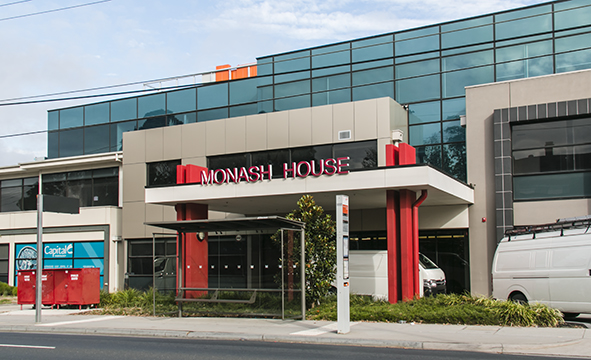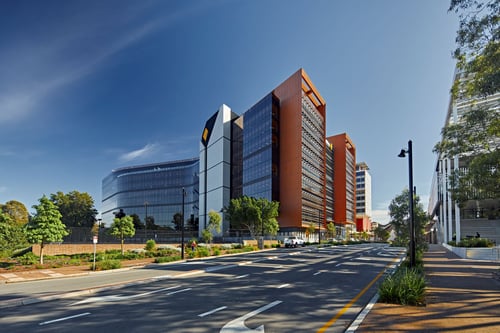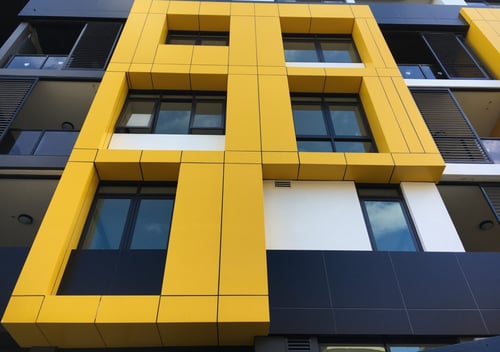Façade compliancy within the industry has certainly been a contentious subject over the past year and a half. The 2014 Lacrosse fire highlighted not only the need for technical clarity around what circumstances in which combustible materials or products may be used in the construction of external walls of certain types of buildings, but also the lack of BCA compliant, non-combustible products that offer the same aesthetic benefits as traditional aluminium composite panel (ACP) within the market.
The Lacrosse incident occurred not simply due to cheap Chinese imports, or builders/developers trying to save money; but more so as a result of the lack of understanding regarding ACP’s and their fire properties.
Many within the industry were left wondering whether external cladding on past and present projects would be determined a fire risk due to the use of non-compliant ACP. In the case of Victoria, the Victorian Building Authority (VBA) launched a comprehensive audit across the state, working closely with the local councils and fire brigades to ensure that where non-compliant cladding was detected; the risk to building occupants was quickly understood.
This process has commenced for other states, posing the question – what is the process of evaluating the risks of past projects, and how to manage the change-over to compliant cladding to ensure occupancy.
CASE STUDY – Monash House Private Hospital, Clayton VIC
Opening in the heart of the Medical precinct in Clayton; Monash House Private Hospital is dedicated to providing patients with the best possible care and service through all stages of their experience, from pre-admission to discharge.
Whilst internal works continued on the SJ Higgins project; as part of the building certificate the Monash Council, in conjunction with the Building Surveyor, identified that the original external cladding was required to be removed in order to bring the building into compliance.
The original cladding installed on the building was found to be ACP, and as such was deemed non-compliant. This product needed to be removed immediately with an alternative, non-combustible solution to be used as the replacement.
Objective
- Contracted builders; SJ Higgins, to find a Building Code of Australia (BCA) compliant, Deemed to Satisfy (DtS) non-combustible cladding to replace the existing non-compliant aluminium composite panel (ACP).
- Ensure the look and appeal of the project remained consistent.
- Identify a replacement that provided efficiencies in terms of cost, time and simplicity to install.
- To ensure that the replacement passes the various façade fire testings.
- That the replacement was something light-weight and easy to install; ensuring the job of replacing the old façade was simple and efficient.
Result
- Fairview’s Vitracore G2 non-combustible; a Deemed to Satisfy, BCA compliant aluminium composite panel that meets AS1530.1 was selected as the replacement
SJ Higgins commenced work on replacing the non-compliant façade in early 2016. The old cladding was removed, and Vitracore G2 was machined onsite and installed within a period of 2 weeks.
Non-combustibility
Vitracore G2, is deemed non-combustible when tested to AS1530.1 as per the requirements set out in the BCA.
Appearance and Composition
Visually, Vitracore G2 is the same as traditional composite panel; but what makes it different is the technology of the core, which is constructed from an 100% aluminium structure, rather than combustible material. It is the same to fabricate and install as traditional ACP, and utilises the PPG coating system; thus is available in the same extensive colour range as Fairview’s traditional ACP product; Vitrabond.
Installation
Vitracore G2 can be machined perfectly and is far lighter and easier to install than FR ACP. The product can be easily and accurately installed by a pre-made cassette system, requires minimal maintenance and comes with a 15-year warranty.
Risk Mitigation and Peace of Mind
Whilst traditional ACP will continue to have its place within the industry, the use of DtS, BCA compliant non-combustible aluminium composite panels, much like Vitracore G2, remove the concerns regarding façade compliancy and fire risk as rightly outlined in the recent VBA Industry Alert.
The product also provides substantial cost savings for builders and developers, given Vitracore G2 can be used as ‘part of the wall’, which eliminates the need for an additional non-combustible layer, unlike traditional Fire Resistant (commonly known as FR or PLUS) aluminium composite panel which requires the non-combustible layer, so that it is considered as an ‘attachment’ for compliance.
Contact the Fairview team for comprehensive test reports and assessments for both Vitracore G2 and our complementary Vitradual product. We have also developed a generalised guide to assist in selecting the right DtS aluminium cladding.




